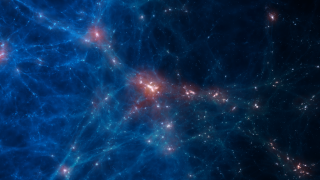Bibcode
Pellegrini, S.; Ciotti, L.; Negri, A.; Ostriker, J. P.
Referencia bibliográfica
The Astrophysical Journal, Volume 856, Issue 2, article id. 115, 6 pp. (2018).
Fecha de publicación:
4
2018
Revista
Número de citas
26
Número de citas referidas
21
Descripción
A recent determination of the relationships between the X-ray luminosity
of the ISM (L X) and the stellar and total mass for a sample
of nearby early-type galaxies (ETGs) is used to investigate the origin
of the hot gas, via a comparison with the results of hydrodynamical
simulations of the ISM evolution for a large set of isolated ETGs. After
the epoch of major galaxy formation (after z ≃ 2), the ISM is
replenished by stellar mass losses and SN ejecta, at the rate predicted
by stellar evolution, and is depleted by star formation; it is heated by
the thermalization of stellar motions, SNe explosions, and the
mechanical (from winds) and radiative AGN feedback. The models agree
well with the observed relations, even for the largely different L
X values at the same mass, thanks to the sensitivity of the
gas flow to many galaxy properties; this holds for models including AGN
feedback, and those without. Therefore, the mass input from the stellar
population is able to account for a major part of the observed L
X; and AGN feedback, while very important to maintain massive
ETGs in a time-averaged quasi-steady state, keeping low star formation
and the black hole mass, does not dramatically alter the gas content
originating in stellar recycled material. These conclusions are based on
theoretical predictions for the stellar population contributions in mass
and energy, and on a self-consistent modeling of AGN feedback.
Proyectos relacionados

Astrofísica Numérica: Formación y Evolución de Galaxias
Entre las cuestiones fundamentales en Astronomía y Astrofísica están la formación y evolución de galaxias. Las escalas de tiempo y tamaño son tan astronómicas que su observación en galaxias individuales es imposible. Solo con el uso de simulaciones numéricas es posible entender la formación de estructuras cósmicas dentro del actual marco
Claudio
Dalla Vecchia